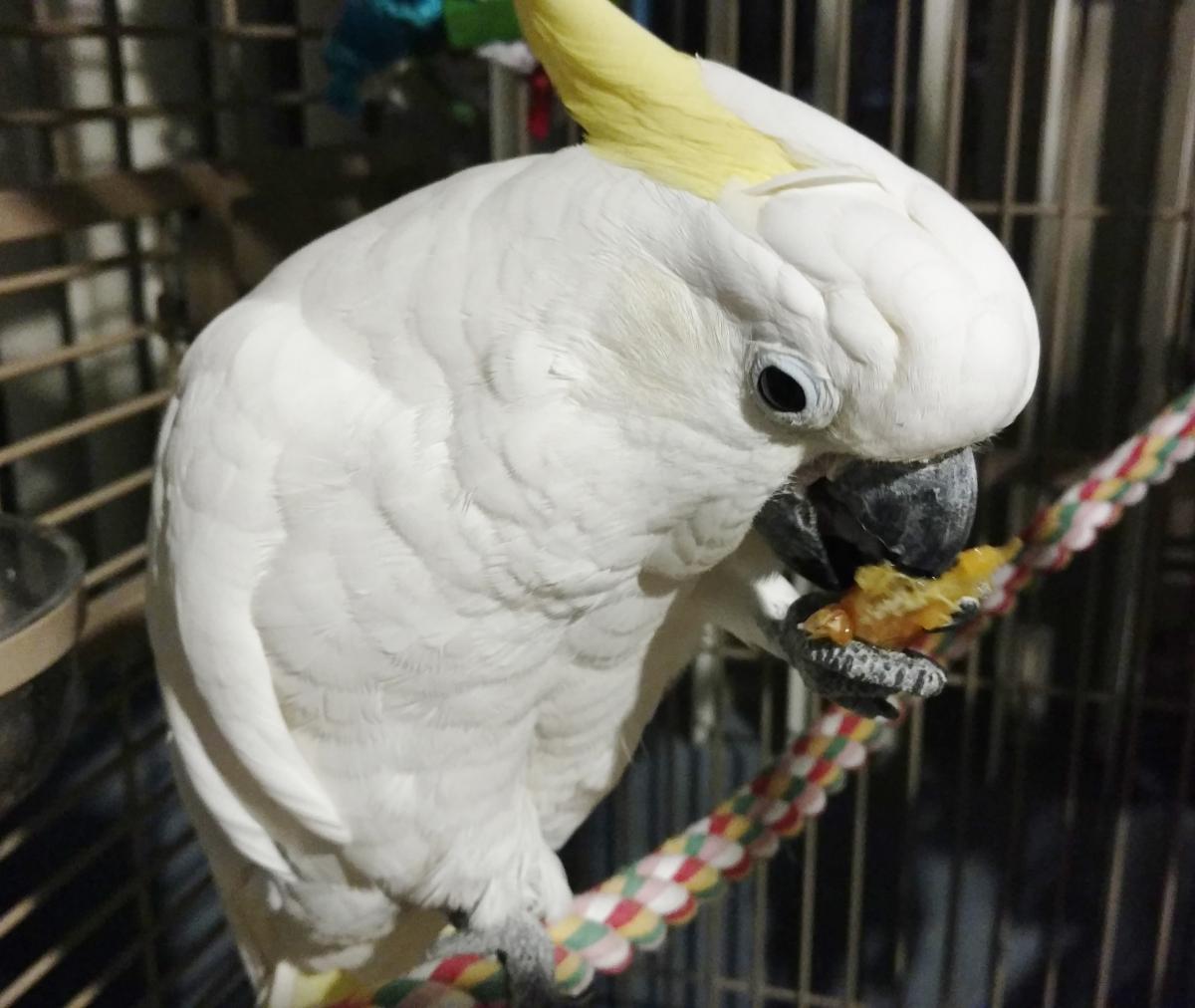Cockatoos - The Basics
 Cockatoos belong to the Psittaciforme order and the family cacatuidae. They originate from Australia and the surrounding islands of the Phillippines, Indonesia, Papua New Guinea and the Solomon Islands. There are about 21 different species in the wild with only a portion of those commonly found in the pet trade. They are often recognized by a crest on the top of their head that they can elevate and lower to show different types of emotions. Cockatoos are variable in color but often are white, pink or black.
Cockatoos belong to the Psittaciforme order and the family cacatuidae. They originate from Australia and the surrounding islands of the Phillippines, Indonesia, Papua New Guinea and the Solomon Islands. There are about 21 different species in the wild with only a portion of those commonly found in the pet trade. They are often recognized by a crest on the top of their head that they can elevate and lower to show different types of emotions. Cockatoos are variable in color but often are white, pink or black.
Cockatoos are loved by many for their exuberant personalities, strong bonds with their family and playful nature. This does require that they receive lots of attention and care. The people who make the best owners for cockatoos have an environment and lifestyle that carefully matches the need of the individual bird. To learn more about behavioral issues and ways to avoid problems see our section on behavior here.
Like all psittacine birds, a healthy diet is required as well as an engaging environment. Information on a diet recommended for most psittacines can be found here. A large cage with various perches consisting of different diameters and textures is needed. Variable perch types allows for the best foot health. Toys are a must for cockatoos to keep their minds engaged and allow for them to have activities throughout the day. Pet stores offer a wide variety of toys appropriate for cockatoos. Many like to destroy wooden blocks and tear up papers. Home-made toys are beneficial as well and can keep a bird stimulated while saving their owners a little money. Foraging is another wonderful way to keep a birds mind stimulated. You can find more information on this by clicking here.
Cockatoos, like other birds, need access to sunlight. The ultraviolet-B rays in sunshine help maintain a normal skeleton by allowing a bird to make vitamin D3. This is then used to allow absorption of calcium from the diet. It is important to know that glass and window screen block the ultraviolet-B rays from the sun. Therefore, getting your bird outside is the most effective way to provide for access to ultraviolet- B rays. A bird should be monitored closely while outdoors however to ensure it does not over heat or fly away. If you do not have a safe way to give your cockatoo access to unfiltered sunshine, a safe alternative is to provide a lamp that emits ultraviolet-B, such as Zoomed's Avisun 5.0. These lights should be 12-18 inches from the bird and used for around 6 hours a day.
Cockatoos produce a fine powder that helps waterproof their feathers. You may notice this powder on the surfaces around the cage and around your home. A regular bath can help keep plumage clean and bright and reduce some of this powder build up. Some birds will bath on their own in their water dish or a designated “bird bath” dish. Others enjoy being misted with a squirt bottle. If introduced in a low stress manner, a cockatoo can even sit underneath a shower stream and learn to enjoy this time.



